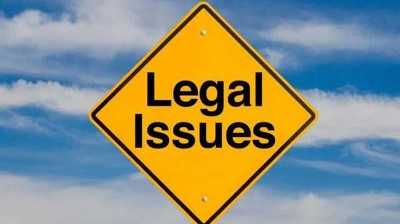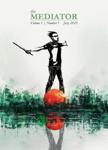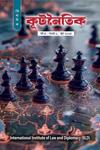
A RECENT incident in Bangladesh shocked people after the media reported that a young man had killed his mother and stored her body in a refrigerator. The news portrayed him as a cold-blooded murderer. However, later investigations revealed that some neighbours, not the son, were responsible for the crime. Despite this, the earlier reports had already labelled the son as a murderer. This highlights a growing issue where media coverage influences public perception and even judicial decisions. For example, in the Abrar Fahad murder case and Feni’s Nusrat murder case, intense media coverage and public pressure seemed to influence the courts, leading to death sentences for many of the accused. This phenomenon, where the media shapes public opinion before a verdict is reached or even influences court decisions, is known as a ‘media trial’. This article explores the legality and underlying remedies of such media trials in Bangladesh.
Under the Constitution of Bangladesh, media trials primarily violate two fundamental rights: the right to a fair trial and the right to life, protected under Articles 35(3) and 32, respectively. Article 35(3) ensures everyone’s right to a fair trial by an independent and impartial court. However, when the media takes on the role of the court, it can be influenced by wealthy or politically powerful individuals, compromising impartiality. Additionally, publishing false or misleading news about someone damages their reputation, violating their right to live with dignity under Article 32. Besides, labelling someone as guilty before a court’s final decision also breaches the principle of presumption of innocence.
Notably, the issue of freedom of the press often arises when discussing media trials. Article 39(2) of the Constitution of Bangladesh addresses this by allowing reasonable restrictions on press freedom. The case Maneka Gandhi v Union of India (1978) emphasised that granting absolute fundamental rights could harm others’ rights. Based on this ruling, restricting the media from declaring someone guilty in a pending case may be argued to have fallen under these ‘reasonable restrictions.’ However, those restrictions cannot be imposed in any unlawful way. Human rights expert Martin Scheinin proposed a 7-part test for limiting fundamental rights. These include ensuring that the restrictions are lawful, necessary, proportionate, consistent with other rights, and do not undermine the essence of the rights.
In addition to the above regulations, journalists also have ethical obligations under the Code of Conduct, 1993. Rule 16 of the Code states that while newspapers report on ongoing trials and final court judgements, they must avoid publishing opinions that might influence the outcome of a pending case. Unfortunately, this code does not apply to broadcast media like radio or television. A proposed Broadcasting Act 2018 aimed to address this gap but was not later passed into law.
Given the laws, case rulings, and ethical standards discussed, media trials in Bangladesh are illegal. However, there is no effective mechanism to control how print or broadcast media handle such cases. To create laws limiting media coverage, legislators may follow Scheinin’s 7-part test to ensure restrictions that do not violate press freedom. Ultimately, a balance must be maintained between the right to a fair trial and the freedom of the press.
A victim of a media trial in Bangladesh has some legal remedies under the current laws. First, the victim can file a complaint with the Bangladesh Press Council, established under the Press Council Act 1974. The Council can investigate the issue and, if it finds a violation of journalistic ethics, issue a warning to the journalist or newspaper under Section 12. However, a question may be posed: how does the remedy ensure effectiveness by giving warning only in response to the violation of journalistic ethics? Therefore, it is deemed to be an insufficient remedy.
Second, the victim can seek enforcement of their fundamental rights, such as the right to a fair trial and the right to life, by filing a writ petition with the Supreme Court under Article 102(1) of the Constitution along with Article 44.
Third, the victim can file a criminal case for defamation under Section 500 of the Penal Code 1860 through an FIR or a complaint, as applicable, under the Code of Criminal Procedure. Special protections are available for women and children under laws like the Women and Children Oppression (Prevention) Act 2000 and the Children Act 2013. For instance, Section 14(1) of the 2000 Act prohibits publishing the name of a sexual offence victim, with violations punishable by up to two years in prison, a fine of up to two lakh taka, or both. Likewise, Section 28 of the 2013 Act bans reports that reveal the identity of a child involved in a case, directly or indirectly.
Additionally, publishing or broadcasting material that obstructs or interferes with the justice process in a pending case may amount to contempt of court. In such cases, the media can be held accountable under the relevant contempt of court laws.
This article was originally published on The New Age. Views in this article are author’s own and do not necessarily reflect IILD policy.
https://www.newagebd.net/post/opinion/251107/legality-of-media-trials-in-bangladesh
Abuzar Gifari is a research officer at the International Institute of Law and Diplomacy.





Leave a reply